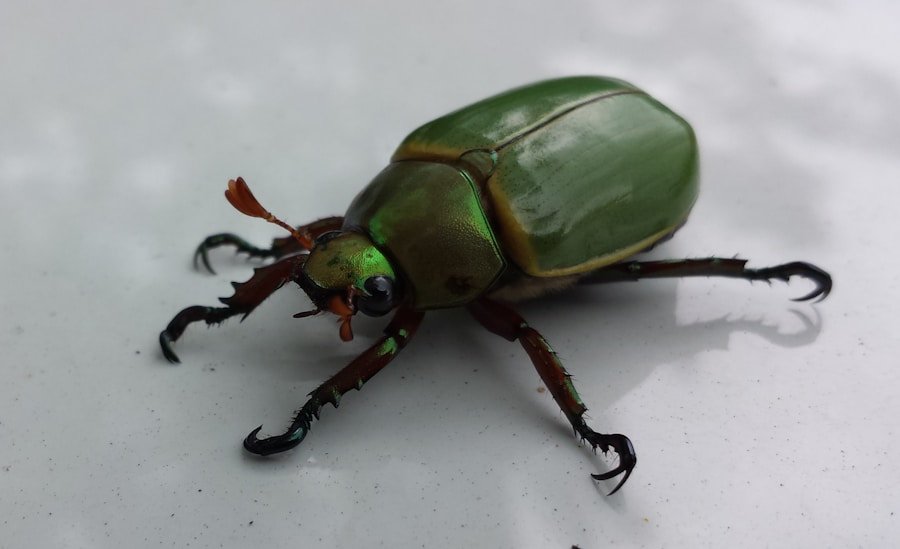When you think of camping, you probably envision sitting around a campfire, roasting marshmallows, and enjoying the great outdoors. However, one thing that can quickly put a damper on your outdoor adventure is the presence of mosquitoes. These pesky insects can quickly turn a relaxing camping trip into a nightmare, as their itchy bites can leave you feeling uncomfortable and irritated.
In addition to the annoyance of their bites, mosquitoes can also pose a serious health threat, as they are known to carry diseases such as malaria, Zika virus, and West Nile virus. This makes it essential to take precautions to protect yourself from these blood-sucking pests when spending time outdoors. Mosquitoes are most active during the early morning and evening hours, which are also prime times for camping activities such as cooking dinner and stargazing.
This means that without proper protection, you are likely to encounter mosquitoes during these times, which can quickly ruin your camping experience. In addition to their irritating bites, mosquitoes can also be a nuisance when trying to sleep in your hammock, as their buzzing and biting can make it difficult to get a good night’s rest. Therefore, it is important to take proactive measures to keep mosquitoes at bay and ensure that you can fully enjoy your time in the great outdoors.
Key Takeaways
- Understanding the Threat: Mosquitoes can ruin your camping experience by causing itchy bites and potentially transmitting diseases.
- The Benefits of Using a Mosquito Net for Your Camping Hammock: It provides a physical barrier to keep mosquitoes and other insects away while you sleep.
- Choosing the Right Mosquito Net for Your Needs: Consider factors such as size, material, and ease of setup when selecting a mosquito net for your hammock.
- Tips for Setting Up and Using a Mosquito Net: Properly secure the net to your hammock and make sure there are no gaps for insects to enter.
- Other Insect Protection Options: In addition to mosquito nets, consider using insect repellent, wearing long sleeves and pants, and treating your camping gear with permethrin for added protection.
The Benefits of Using a Mosquito Net for Your Camping Hammock
One of the most effective ways to protect yourself from mosquitoes while camping is by using a mosquito net for your hammock. A mosquito net is a lightweight, breathable fabric that is designed to create a barrier between you and the insects, allowing you to relax and sleep comfortably without the threat of mosquito bites. These nets are typically made from fine mesh that is small enough to keep mosquitoes out while still allowing air to flow through, ensuring that you stay cool and comfortable while inside.
In addition to protecting you from mosquitoes, a mosquito net can also provide some shade and protection from the sun, making it a versatile and essential piece of camping gear. Using a mosquito net for your camping hammock offers several benefits. Firstly, it provides a physical barrier between you and the mosquitoes, preventing them from landing on you and biting.
This can help to reduce the risk of mosquito-borne illnesses and ensure that you can enjoy your camping trip without the constant annoyance of itchy bites. Additionally, a mosquito net can also provide some privacy and protection from other insects such as flies and ants, allowing you to relax and unwind in your hammock without worrying about unwanted visitors. Overall, using a mosquito net for your camping hammock can significantly improve your outdoor experience by providing a comfortable and bug-free environment for relaxation and sleep.
Choosing the Right Mosquito Net for Your Needs
When it comes to choosing a mosquito net for your camping hammock, there are several factors to consider to ensure that you select the right one for your needs. Firstly, you will need to consider the size and shape of your hammock, as well as any additional features such as a rainfly or bug netting that may already be included. It is important to choose a mosquito net that is compatible with your specific hammock model and that can be easily attached and removed as needed.
Additionally, you will want to consider the weight and packability of the mosquito net, as well as any additional features such as built-in pockets or gear loops that may be useful for storing small items while inside. Another important factor to consider when choosing a mosquito net for your camping hammock is the level of protection it provides. Look for a net with fine mesh that is small enough to keep out mosquitoes and other insects, while still allowing air to flow through freely.
Additionally, consider whether you will be using the mosquito net in areas with a high concentration of mosquitoes or other biting insects, as this may impact the level of protection you require. Finally, consider any additional features such as zippers or drawstrings that may be useful for securing the net around your hammock and keeping insects out. By carefully considering these factors, you can choose a mosquito net that is well-suited to your specific camping needs and provides reliable protection from bugs.
Tips for Setting Up and Using a Mosquito Net with Your Camping Hammock
| Benefits of Using a Mosquito Net for Your Camping Hammock | Statistics |
|---|---|
| Protection from Mosquito Bites | Over 200 million cases of malaria reported annually |
| Prevention of Other Insect Bites | Over 1 million deaths caused by mosquito-borne diseases |
| Improved Sleep Quality | 70% reduction in mosquito bites with a mosquito net |
| Enhanced Camping Experience | 90% of campers report better experience with mosquito net |
Once you have chosen the right mosquito net for your camping hammock, it is important to know how to properly set it up and use it to ensure maximum effectiveness. Start by carefully reading the manufacturer’s instructions for setting up the mosquito net, paying close attention to any specific attachment points or adjustments that may be required for your particular hammock model. It is important to ensure that the mosquito net is securely attached to your hammock and that there are no gaps or openings where insects could enter.
When using the mosquito net, be sure to fully enclose yourself within it before settling down in your hammock. This will help to create a barrier between you and the insects and ensure that you are fully protected while inside. Additionally, be mindful of any openings or gaps in the netting that could allow insects to enter, and take care to keep these areas sealed while inside.
Finally, be sure to properly store and care for your mosquito net when not in use, keeping it clean and free from damage to ensure that it remains effective for future camping trips.
Other Insect Protection Options for Your Outdoor Adventures
In addition to using a mosquito net for your camping hammock, there are several other insect protection options that can help to keep bugs at bay during your outdoor adventures. One popular option is insect repellent, which can be applied directly to your skin or clothing to deter mosquitoes and other biting insects. Look for a repellent that contains DEET or picaridin for maximum effectiveness, and be sure to follow the manufacturer’s instructions for safe and proper use.
Another option for insect protection is a bug spray or fogger that can be used to create a barrier around your campsite or sleeping area. These products typically contain insecticides that are designed to kill mosquitoes and other insects on contact, providing an additional layer of protection against bites. However, it is important to use these products with caution and follow all safety guidelines to avoid any potential harm to yourself or the environment.
Finally, consider using natural insect deterrents such as citronella candles or essential oils to help keep bugs away from your campsite. These products can provide some relief from mosquitoes and other insects without the use of harsh chemicals, making them a more environmentally friendly option for bug protection. By combining these insect protection options with a mosquito net for your camping hammock, you can create a comprehensive defense against bugs and ensure that you can fully enjoy your time in the great outdoors.
The Environmental Impact of Using Mosquito Nets
While using a mosquito net for your camping hammock can provide essential protection from bugs, it is important to consider the environmental impact of these products. Many traditional mosquito nets are made from synthetic materials such as nylon or polyester, which are not biodegradable and can contribute to environmental pollution when disposed of improperly. Additionally, the production of these materials can have negative effects on the environment, including greenhouse gas emissions and water pollution.
To minimize the environmental impact of using a mosquito net, consider choosing a product made from sustainable or recycled materials whenever possible. Look for nets made from natural fibers such as cotton or hemp, which are biodegradable and have less impact on the environment when disposed of. Additionally, consider ways to extend the lifespan of your mosquito net by properly caring for and repairing it as needed, rather than replacing it frequently.
Another way to reduce the environmental impact of using a mosquito net is by supporting companies that prioritize sustainability and ethical production practices. Look for brands that use eco-friendly materials and manufacturing processes, as well as those that give back to environmental causes or support local communities. By making conscious choices about the products you use and the companies you support, you can help minimize the environmental impact of using a mosquito net for your camping hammock.
Enjoying Bug-Free Camping with a Mosquito Net for Your Hammock
In conclusion, using a mosquito net for your camping hammock is an essential way to protect yourself from mosquitoes and other biting insects while spending time outdoors. These nets provide a physical barrier between you and the bugs, allowing you to relax and sleep comfortably without the threat of itchy bites or potential health risks. By carefully choosing the right mosquito net for your needs and following proper setup and usage tips, you can ensure maximum effectiveness and enjoy bug-free camping experiences.
In addition to using a mosquito net for your camping hammock, there are several other insect protection options that can help keep bugs at bay during your outdoor adventures. By combining these methods with environmentally conscious practices, you can minimize the impact on the environment while still enjoying effective bug protection. With these strategies in mind, you can fully enjoy your time in the great outdoors without letting bugs ruin your adventure.
So next time you head out on a camping trip, be sure to pack a reliable mosquito net for your hammock and enjoy bug-free relaxation under the stars.
FAQs
What is the purpose of a mosquito net for a camping hammock?
A mosquito net for a camping hammock serves as a protective barrier to keep insects, particularly mosquitoes, from bothering you while you sleep or relax in your hammock.
How does a mosquito net work?
A mosquito net is made of fine mesh that is designed to physically block insects from reaching you while allowing air to flow through. It creates a barrier that prevents mosquitoes and other bugs from landing on or biting you.
Why is a mosquito net important for camping?
A mosquito net is important for camping because it helps to protect you from insect bites, particularly those from mosquitoes which can carry diseases such as malaria, dengue fever, and Zika virus. It allows you to enjoy the outdoors without the nuisance and potential health risks associated with insect bites.
What are the benefits of using a mosquito net for a camping hammock?
The benefits of using a mosquito net for a camping hammock include protection from insect bites, improved comfort and relaxation, and peace of mind knowing that you are safeguarded from potentially harmful insects while enjoying the outdoors.
How do you choose the right mosquito net for your camping hammock?
When choosing a mosquito net for your camping hammock, consider factors such as the size and shape of your hammock, the mesh density of the net, and any additional features such as waterproofing or compatibility with your hammock’s suspension system. It’s important to ensure that the net fits securely and provides adequate coverage.













